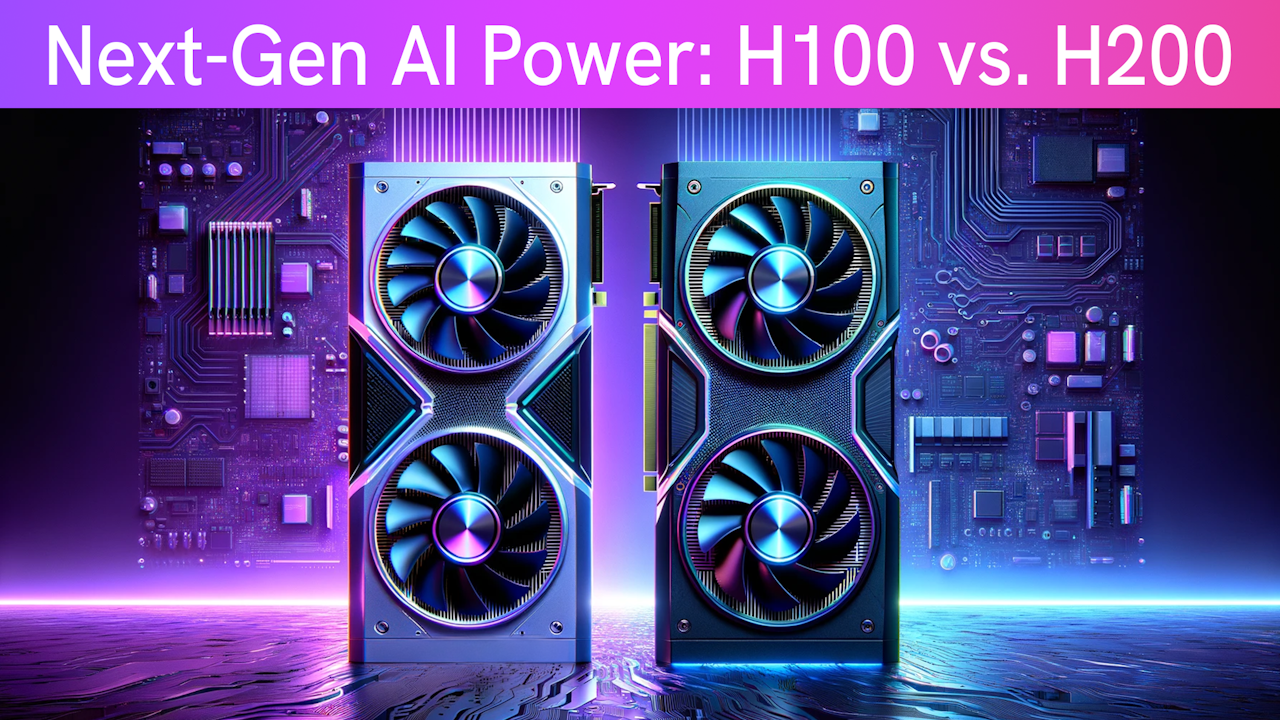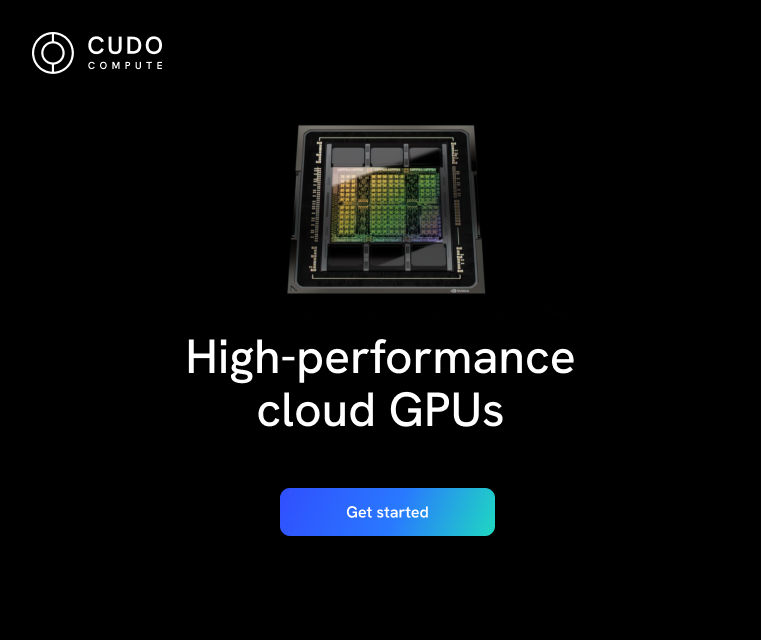The NVIDIA H200 GPU is the next eagerly anticipated release in AI. Nvidia has showcased some remarkable specs of the H200, boasting nearly twice the memory capacity of its predecessor, the H100. Both GPUs are built on the powerful Hopper architecture enhanced for larger AI and HPC workloads.
When it launched, the NVIDIA H100 revolutionized artificial intelligence (AI) performance. The upcoming H200, expected later in 2024, promises to push these boundaries even further. However, the key question remains: How much will the H200 improve on the H100's capabilities?
Diving into the specifics of each GPU's architecture and what Nvidia has teased on the H200 so far, we can gain valuable insights into the performance gains users can expect.
NVIDIA H100 architecture and specification
The NVIDIA H100 is the most powerful and programmable GPU from NVIDIA to date. It features several architectural improvements, including increased GPU core frequency and enhanced computational power, compared to its predecessor (the A100).
The H100 features a new Streaming Multiprocessor (SM). SMs are components within the GPU architecture that handle various tasks, including:
- Running CUDA threads, which are the basic units of execution in Nvidia's programming model.
- Performing traditional floating-point computations (FP32, FP64).
- Housing other specialized cores, like the Tensor Cores.
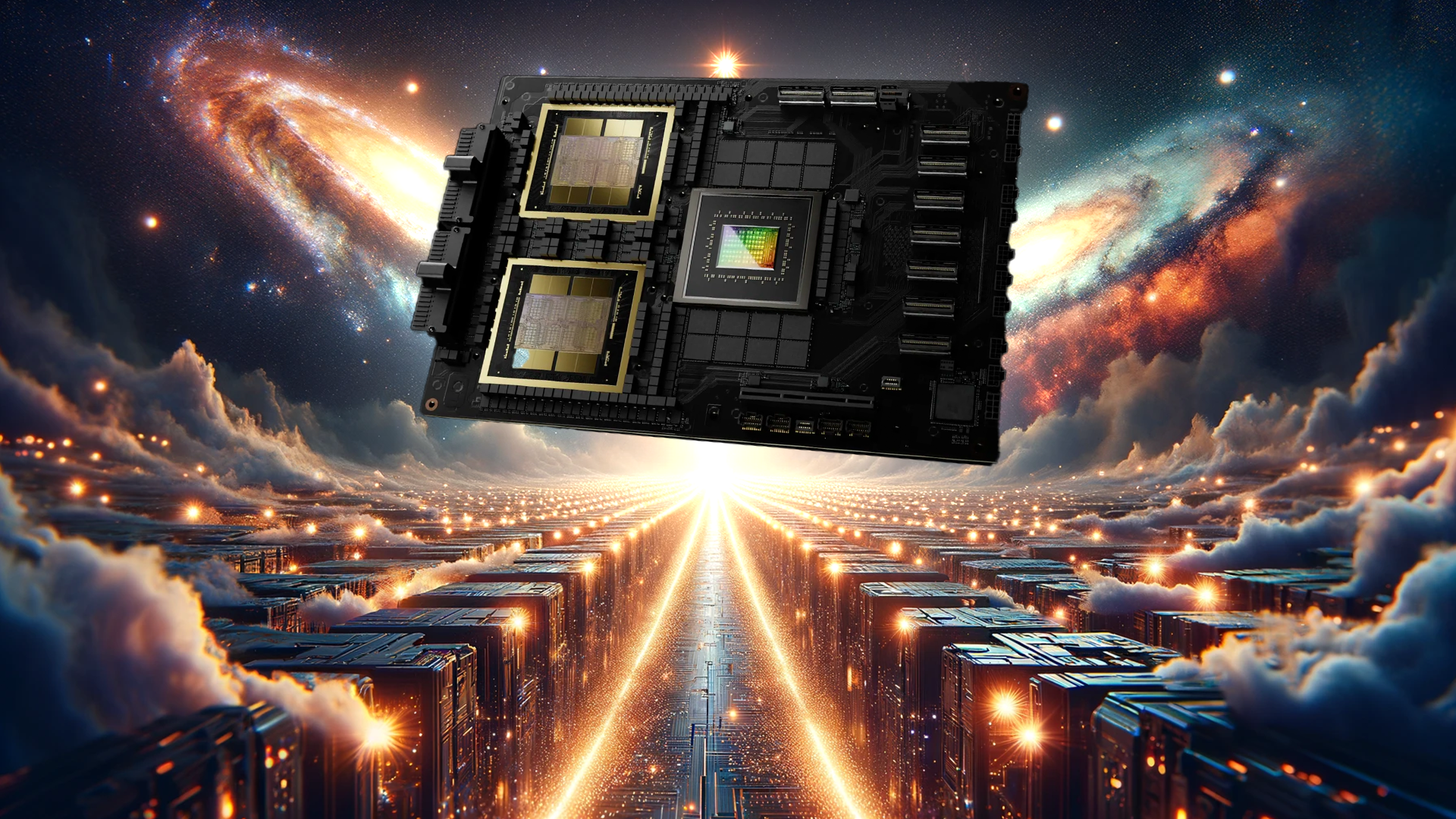
As stated previously, the H100 SM can perform Matrix Multiply-Accumulate (MMA) operations twice as fast as the A100 for the same data types. The H100 SM delivers four times the performance boost over the A100 SM for floating-point operations. This is achieved through two key advancements:
- FP8 Data Type: The H100 introduces a new data format (FP8) that uses half the bits (8 bits) compared to the A100's standard (FP32, 32 bits), enabling faster calculations but with slightly lower precision.
- Improved SM Architecture: Even for traditional data types (FP32, FP64) used in Tensor Cores, the H100 SM itself is inherently twice as powerful due to internal architectural enhancements.
Is H100 the best GPU?
"As of its release, the NVIDIA H100 is considered the best GPU for AI and HPC workloads, thanks to its cutting-edge architecture, massive memory bandwidth, and superior AI acceleration capabilities. It is specifically designed for deep learning, scientific computing, and data analytics at scale. However, "best" can depend on specific use cases, budgets, and compatibility requirements.
As discussed previously, the H100 features fourth-generation Tensor Cores designed to improve performance significantly over the previous generation A100.
The H100 boasts a new transformer engine specifically designed to accelerate the training and inference of transformer models, which is crucial for Natural Language Processing (NLP). This engine leverages a combination of software optimizations and Hopper Tensor Cores to achieve significant speedups.
The engine dynamically switches between two data precision formats (FP8 and FP16) for faster calculations with minimal impact on accuracy. It automatically and dynamically handles conversions between these formats within the model for optimal performance.
The H100 transformer engine gives it up to 9x faster AI training and 30x faster AI inference speedups on large language models than the A100.
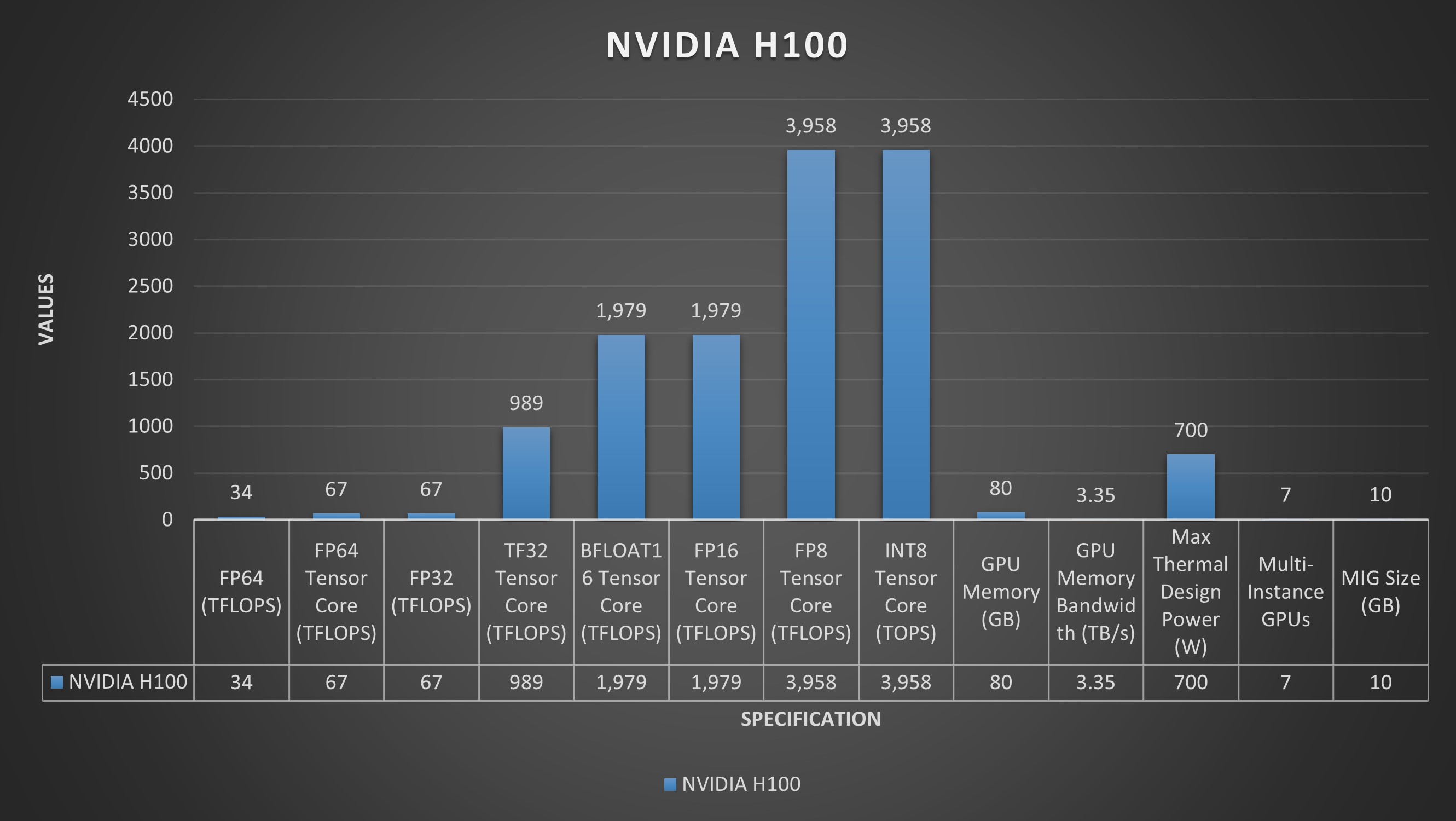
Its powerful NVLink Network Interconnect facilitates communication between up to 256 GPUs across multiple compute nodes for tackling massive datasets and complex problems. Secure MIG technology partitions the GPU for secure, right-sized instances, maximizing quality of service for smaller workloads.
The NVIDIA H100 is the first truly asynchronous GPU. This refers to its ability to overlap data movement with computations, maximizing the overall computational efficiency. This overlapping ensures that the GPU can perform data transfers in parallel with processing tasks, reducing idle times and boosting the throughput of AI and high-performance computing (HPC) workloads.
The H100 further boosts efficiency by introducing the Tensor Memory Accelerator (TMA), a feature designed to optimize memory management on the GPU. By streamlining memory operations, the TMA significantly reduces the CUDA threads needed to manage memory bandwidth, freeing up more CUDA threads to focus on core computations.
Another innovation is the Thread Block Cluster. This groups multiple threads, enabling them to cooperate and share data efficiently across multiple processing units within the H100 which also extends to asynchronous operations, ensuring efficient use of the TMA and Tensor Cores.
Finally, the H100 streamlines communication between different processing units with a new Asynchronous Transaction Barrier. This allows threads and accelerators to synchronize efficiently, even when located on separate parts of the chip.
To read more on the H100 benchmarks, see our take on the A100 vs H100.
NVIDIA H100 vs H200 Benchmarks
From our previous benchmarks of the NVIDIA H100, we discussed its memory specifications and more. In this article, we will focus on the NVIDIA H200.
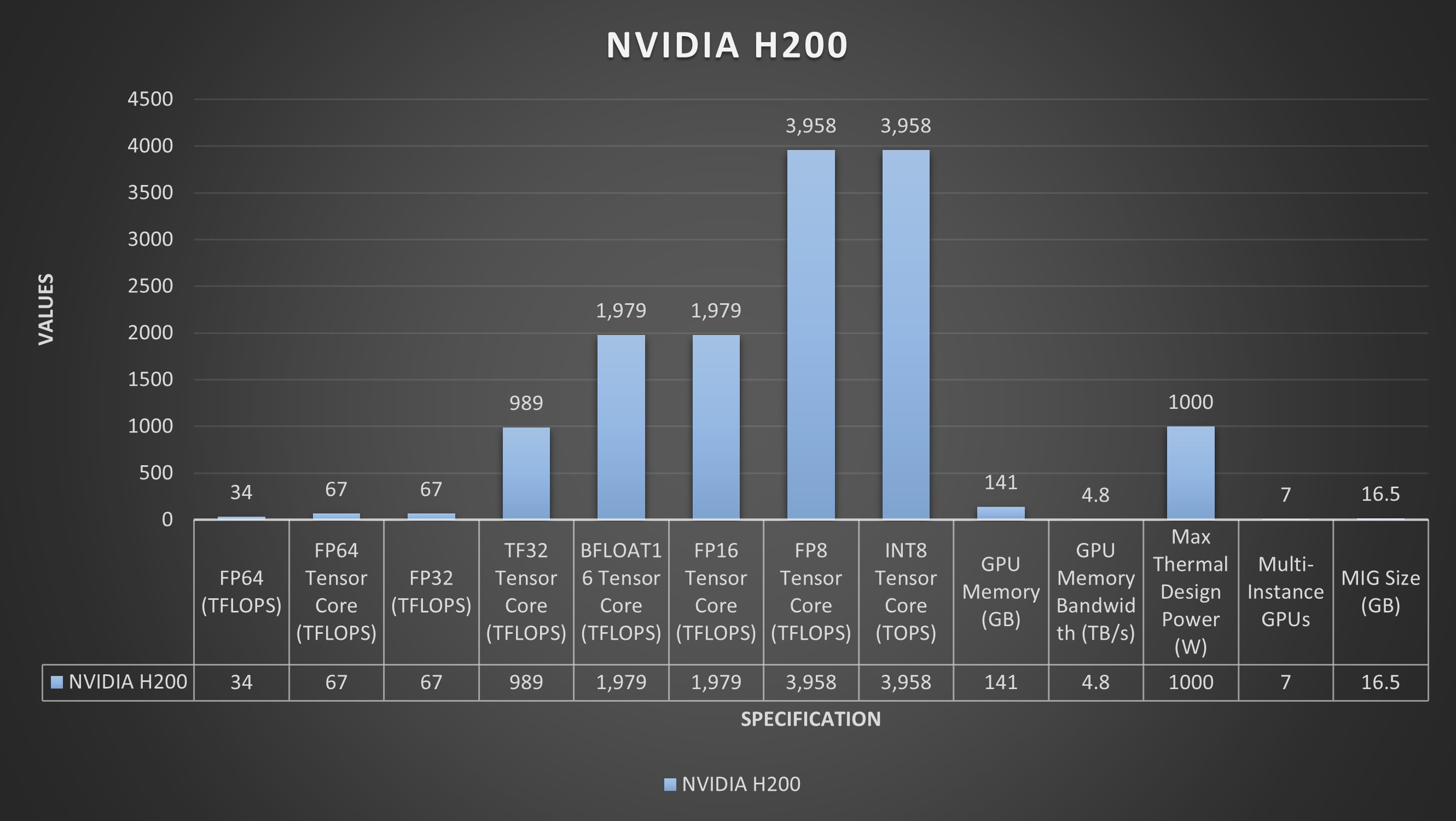
As impressive as the H100 is, the H200 pushes its capabilities. It is the first GPU to feature HBM3e memory, with a memory capacity of 141 GB, which is nearly double that of the H100. The increased memory size is significant for AI because it allows for larger models and datasets to be stored directly on the GPU, reducing the latency associated with data transfer.
The H200's 4.8 TB/s of memory bandwidth is a stark improvement over the H100's 3.35 TB/s, indicating a capability to feed data to the processing cores much faster, which is essential for workloads requiring high throughput.
For memory-intensive HPC tasks like weather modeling, the H200's superior memory bandwidth means data can flow more freely between the GPU memory and processing cores, reducing bottlenecks and slashing time to insight. The reported up to 110x performance increase in HPC tasks indicates the H200's potential to handle highly complex simulations, enabling researchers and engineers to achieve more in less time.
You can be first in line to rent or reserve the NVIDIA H200 when it’s available at CUDO Compute. You can register your interest now or use one of our other GPUs, like the H100, and upgrade when the H200 becomes available. Contact us to learn more.
| Specification | NVIDIA H100 SXM | NVIDIA H200 |
|---|---|---|
| Form Factor | SXM | SXM |
| FP64 | 34 TFLOPS | 34 TFLOPS |
| FP64 Tensor Core | 67 TFLOPS | 67 TFLOPS |
| FP32 | 67 TFLOPS | 67 TFLOPS |
| TF32 Tensor Core | 989 TFLOPS | 989 TFLOPS |
| BFLOAT16 Tensor Core | 1,979 TFLOPS | 1,979 TFLOPS |
| FP16 Tensor Core | 1,979 TFLOPS | 1,979 TFLOPS |
| FP8 Tensor Core | 3,958 TFLOPS | 3,958 TFLOPS |
| INT8 Tensor Core | 3,958 TOPS | 3,958 TOPS |
| GPU Memory | 80GB | 141GB |
| GPU Memory Bandwidth | 3.35TB/s | 4.8 TB/s |
| Decoders | 7 NVDEC, 7 JPEG | 7 NVDEC, 7 JPEG |
| Max Thermal Design Power | Up to 700W | Up to 1000W |
| Multi-Instance GPUs | Up to 7 MIGs @ 10GB each | Up to 7 MIGs @ 16.5GB each |
| Interconnect | NVLink: 900GB/s, PCIe Gen5: 128GB/s | NVLink: 900GB/s, PCIe Gen5: 128GB/s |
The H200 maintains the same performance metrics in FP64 and FP32 operations as the H100. There are also no distinctions in FP8 and INT8 performances, with 3,958 TFLOPS in each category. This is still impressive as the INT8 precision strikes a balance between computational efficiency and model accuracy and is often used for edge devices where computational resources are at a premium.
The H200 not only provides enhanced performance but does so at the same energy consumption levels as the H100. The 50% reduction in energy use for LLM tasks combined with the doubled memory bandwidth reduces its total cost of ownership (TCO) by 50%.
How much faster is H200 vs H100?
"The NVIDIA H200 GPU outperforms the H100, delivering up to 45% more performance in specific generative AI and HPC (High Performance Computing) benchmarks. This improvement is largely attributed to the H200's enhanced memory capacity with HBM3e and greater memory bandwidth, as well as optimizations in thermal management. The exact degree of performance enhancement can differ depending on the particular workloads and setups.
NVIDIA H100 vs H200 MLPerf Inference Benchmarks
Let’s look at how the NVIDIA H100 compares with the NVIDIA H200 on MLPerf inference analysis. MLPerf benchmarks are a set of industry-standard tests designed to evaluate the performance of machine learning hardware, software, and services across various platforms and environments. They provide a reliable measure for comparing the efficiency and speed of machine learning solutions, helping users identify the most effective tools and technologies for their AI and ML projects.
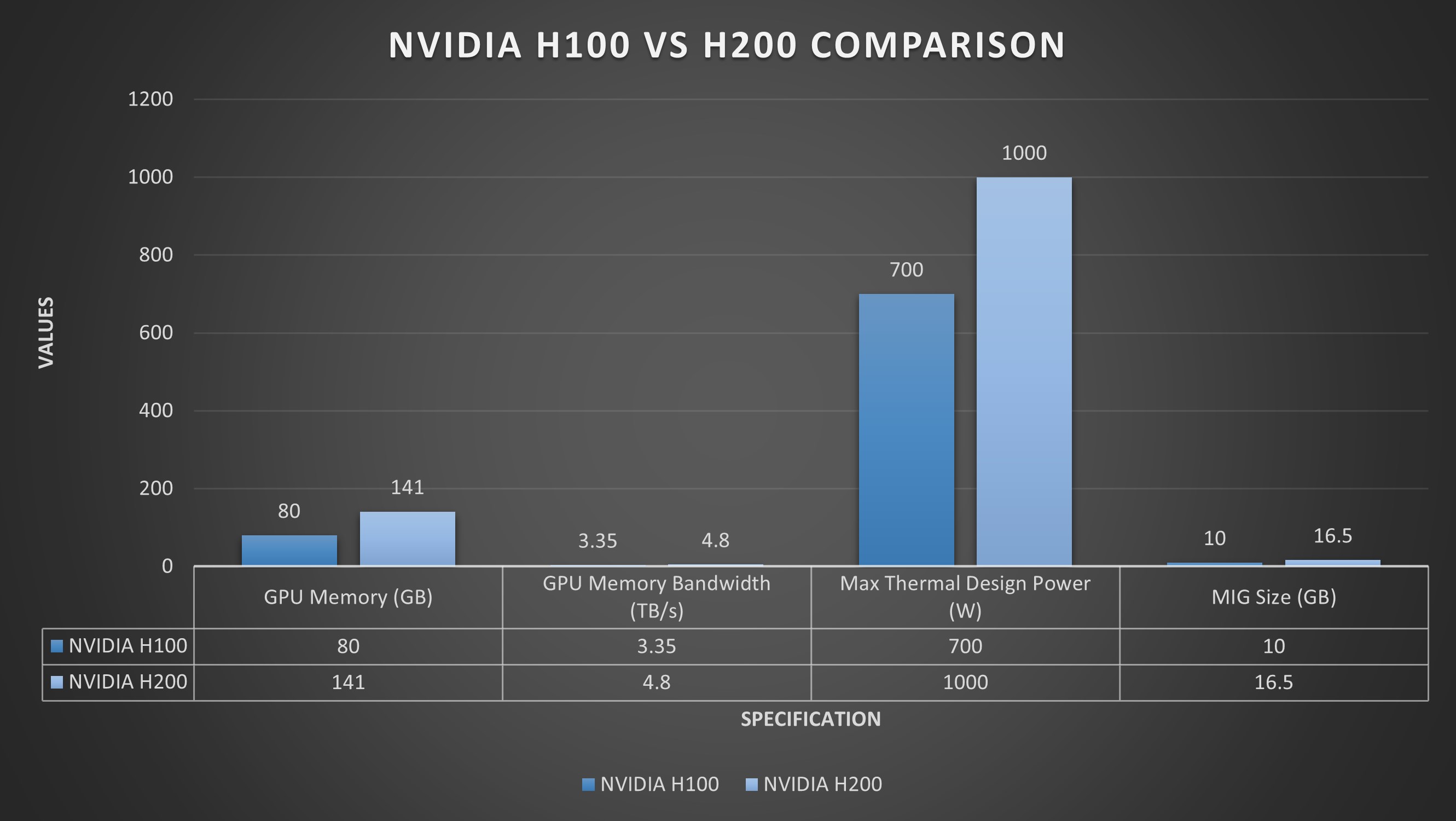
This is important for gen AI developers to test their models. Inference allows LLMs to understand new, unseen data. When presented with new data, inference enables the model to understand the context, intent, and relationships within the data based on the knowledge it acquired during training. The model then generates tokens (e.g., a word) one unit at a time.
The LLM considers the context gleaned from inference and the previously generated tokens to predict the most likely next element in the sequence. This allows the LLM to create comprehensive outputs, whether it's translating a sentence, writing different creative text formats, or answering a question comprehensively.
Here is how the H100 compares with the H200 in handling inference tasks by looking at how many tokens each can generate within a certain timeframe. This approach offers a practical metric for assessing their performance, especially in tasks related to natural language processing:
According to the MLPerf Inference v4.0 performance benchmarks provided for the Llama 2 70B model, the H100 achieves a throughput of 22,290 tokens/second in offline scenarios, and the H200 achieves a throughput of 31,712 tokens/second for the same scenarios, demonstrating a significant increase in performance.
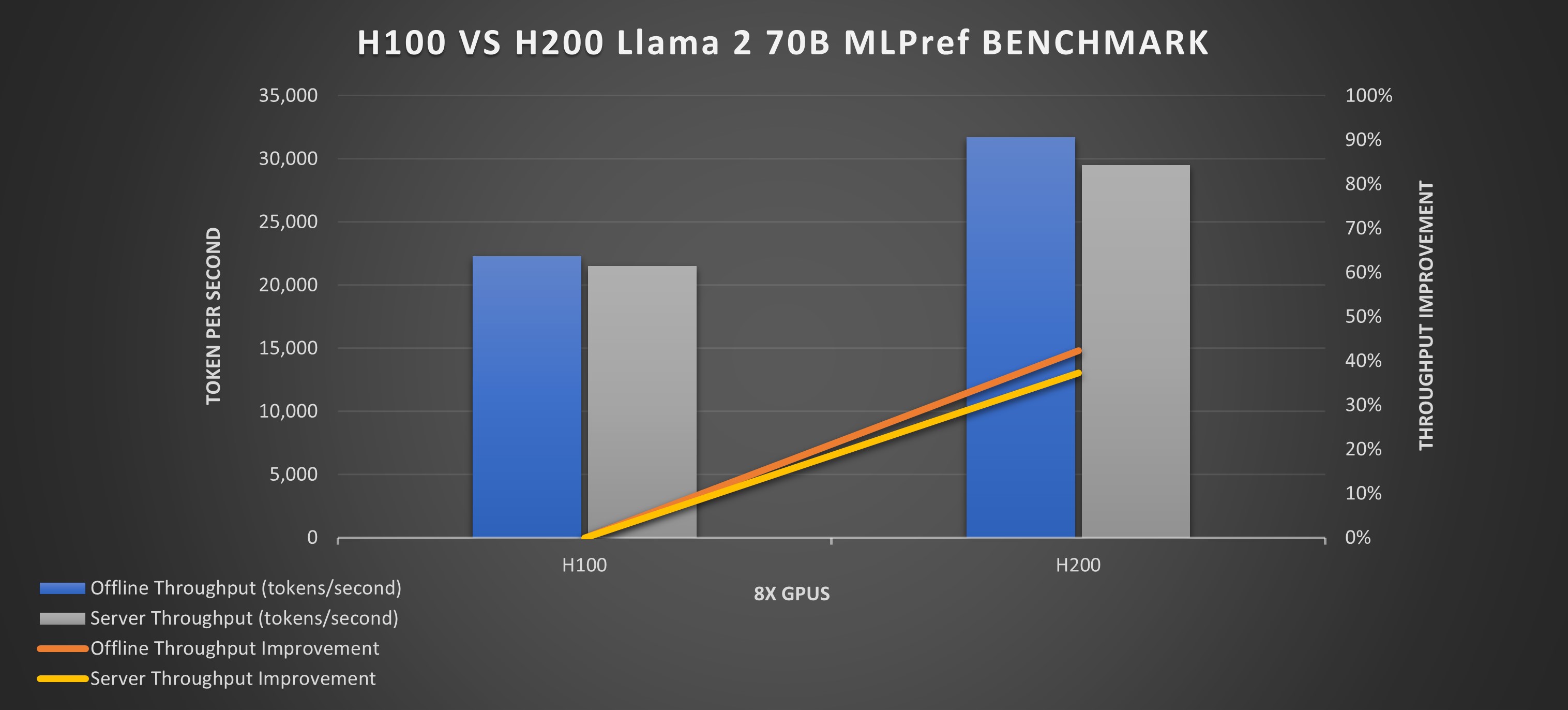
In server scenarios, the H100 achieves 21,504 tokens/second, while the H200 reaches 29,526 tokens/second. This indicates that the H200 delivers a 37% increase on the throughput of the H100 in server scenarios, a considerable performance enhancement. It also shows a notable increase in offline scenarios.
| GPU | Offline Throughput (tokens/second) | Throughput Improvement | Server Throughput (tokens/second) | Throughput Improvement |
|---|---|---|---|---|
| H100 | 22,290 | - | 21,504 | - |
| H200 | 31,712 | +42.4% | 29,526 | +37.3% |
The reasons for this boil down to the following:
H200's Memory and Bandwidth Boost:
The H200’s larger memory (141GB) and higher bandwidth (4.8 TB/s) compared to the H100 is roughly 1.8 and 1.4 times, respectively. This helps the H200 hold larger data sizes than the H100, reducing the need to fetch data constantly from slower external memory. The higher bandwidth allows for faster data transfer between the memory and the GPU.
With these, the H200 can handle large tasks without needing complex techniques like tensor parallelism (splitting data) or pipeline parallelism (processing in stages).
Improved Inference Throughput:
The lack of memory and communication bottlenecks allows the H200 to dedicate more processing power to computations, leading to faster inference. Benchmarks on the Llama test demonstrate this advantage, with the H200 achieving up to 28% improvement even at the same power level (700W TDP) as the H100.
Performance Gains:
Benchmarks show that the H200 achieves up to 45% better performance on the Llama test compared to the H100 when the power consumption is configured to 1000W.
These comparisons highlight the technological advancements and performance enhancements achieved with the H200 GPU over the H100, especially in handling the demands of generative AI inference workloads like Llama 2 70B through greater memory capacity, higher memory bandwidth, and improved thermal management.
The NVIDIA H200 will be available on CUDO Compute upon its release. You can register your interest to be the first to use it now.
Learn more about CUDO Compute: Website, LinkedIn, Twitter, YouTube, Get in touch.
Continue reading
Everything You Need to Know About the NVIDIA A40: Price, Specification, Performance, and More
13 min read
NVIDIA’s Blackwell Architecture: Breaking Down The B100, B200, and GB200
12 min read
PyTorch vs Tensorflow: Comparative Analysis of AI Frameworks
13 min read
CUDO Compute Boosts GPU Fleet: More NVIDIA A40s, A6000s and V100s Now Available to Power AI and HPC Globally
3 min read
